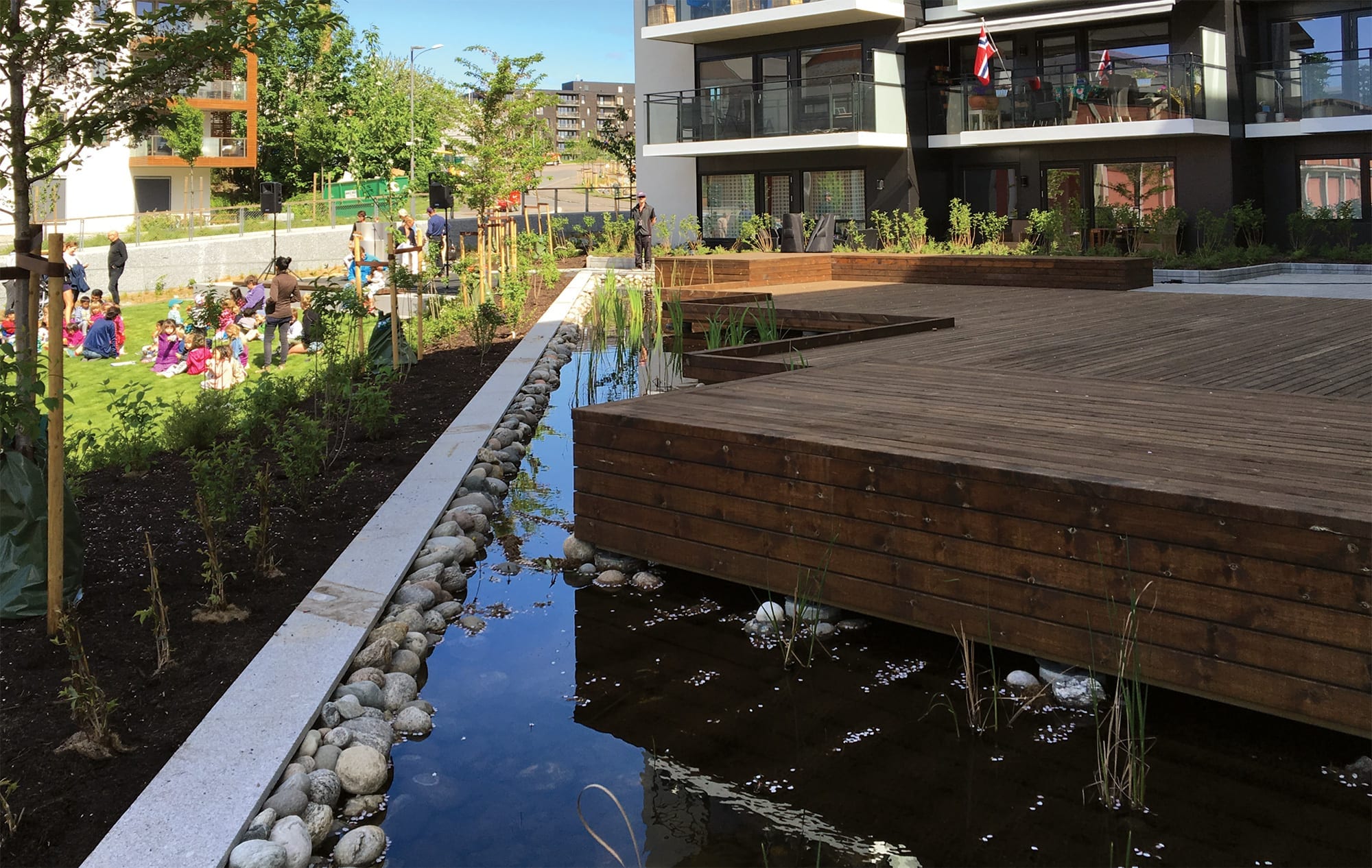Managing Flood Risk in Oslo
“Combatting and adapting to climate change is the greatest challenge of our time and it can’t be left to someone else, at another time, or in another place.” With these words Raymond Johansen, Governing Mayor of Oslo, officially marked the start of Oslo’s year as European Green Capital 2019. Oslo’s aim for the year has been to spread knowledge, inspire and mobilize citizens and local governments throughout Europe, and beyond, in the struggle against climate change.
Even though cities experience the impacts of climate change in many different ways due to varying geography, infrastructure and many other factors, there is still a lot that they can learn from each other. In Oslo, one major challenge has been the risk of flooding due to its overloaded sewage system. In the spirit of sharing experiences and lessons learned, Oslo has made the story public, of how it is revolutionizing its waterways, and contributed to the Future-proof toolkit for cities, created within the European Green Capital Network.
Heavy rainfall is a major challenge for sewage systems and with episodes of extreme weather on the rise, this is likely to worsen in future. The City of Oslo saw the overloaded sewage system, particularly in the city centre, as a flood risk and as a real threat to water quality and public health. Something had to be done.

“Stormwater management has to be a central part of city planning. The government must ensure that municipalities have the necessary resources and tools to fund green and open solutions in parks and green spaces and thereby also spare the sewage system,” explains Norway’s Minister for the Climate and Environment Ola Elvestuen.
In Oslo, the city decided to change the way it manages its water systems, by adopting a completely new approach – letting its waterways flow freely.
Re-opening Oslo’s rivers and streams
Within the framework of Oslo’s 2014 Stormwater Management Strategy, the city created plans to re-open the rivers and streams of its urban areas. Oslo has 10 main waterways flowing through its urban areas and until 2012, most of the 24 kilometers of waterways were flowing underground. The initial impetus for creating the strategy in the first place, came from the Water and Wastewater Agency in 2010, which alerted the City Council of the urgent need for a stormwater policy. Oslo’s Stormwater Management Strategy, was developed by 2012, approved in 2014 and then incorporated into the city’s action plan in 2016.
Despite initial challenges with urban planners and developers, there was no real opposition to the strategy, partly owing to the open dialogue with these key stakeholders. Another reason was that the action plan was created in 2016, while memories were still fresh of the unprecedented rainfalls of 2014 and 2015. The floodway and retention network laid out in the plan includes large areas reserved for heavy rainfall, as well as minor floodways to bring the excess rainwater to the main floodways.
Stakeholder engagement
One of the reasons for the closed waterways, is that it is simpler for urban planners and developers to put water underground rather than to let it flow openly. It was necessary then to plan new regulations and to carry out good communications with developers, and to provide them with support and guidance. The city offered courses for planners and developers, created 30 factsheets on measures to support the implementation of the stormwater management regulations, and hosted at least two open meetings for planners and developers each year to share information on the topic. Knowledge and awareness of the importance of the topic has increased, contributing to the widespread acceptance and support for the action plan.
Challenges faced
Although the action plan is an important aspect of the Stormwater Management Strategy, it has not yet been officially approved at a political level. This has delayed the implementation of some of its measures. There is not one single reason for this, but several contributing factors: time-consuming cooperation between different agencies and departments, and the difficulty to maintain political focus on the topic, due to greater awareness of other key sustainability topics, in particular mobility.
Looking ahead
Despite some implementation challenges, Oslo still sees its Stormwater Management Strategy as a success. Other parts of the strategy are now in place, which means that for example, any new building constructed has to incorporate green solutions such as green roofs. Acceptance of the new regulations among planners and developers has also improved thanks to the solid communications work and knowledge sharing among key stakeholders.

As the 2019 European Green Capital and a leading city in the field of urban sustainability, Oslo is creating a momentum to encourage other cities to follow in its footsteps on the path to becoming “future-proof” in the face of climate change. Oslo is open about the fact that even the green capitals of Europe face obstacles and are still learning. The city’s key message is that by working together and sharing experiences, cities can learn from each other and move forward.
The European Green Capital Network
The Oslo case study is available in the future-proof toolkit, created by the European Green Capital Network, a network of former European Green Capital Award winners and finalists. The toolkit is the first in a series of five toolkits on different themes, which address challenges that cities face in becoming more sustainable. Further case studies covered in this Toolkit showcase Nijmegen’s citizen-led approach to reducing flood risk, Hamburg’s plans to build 100 hectares of green roofs, and Lisbon’s green infrastructure programme. The case studies highlight the achievements, but also present the challenges faced – whether political, administrative or related to public perception.
Stay tuned for our city focus on Lisbon, 2020 European Green Capital.